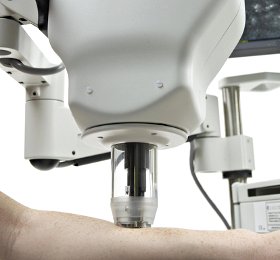Cholesterol is one of the body’s main fats and is present in every body cell. It serves as the basic material for the synthesis of many hormones and contributes to the maintenance and stability of cell membranes.
Blood cholesterol is synthesized mainly by the liver and intestine and then transported into the blood by lipoproteins, which act as transporters. There are two types of lipoproteins:
- Low-density lipoproteins
- High-density lipoproteins.
Cholesterol must be bound to these molecules because it is not soluble in water or blood.
High Density Lipoproteins (HDL)
High-density lipoproteins carry cholesterol from the tissues to the liver to flush it out and avoid its accumulation in the tissues. They help clean the arteries of bad fatty deposits and thus reduce the risk of developing atheromatous plaques lining the walls of blood vessels. That’s why it is called “good cholesterol.
Low-density lipoproteins (LDL)
 Low-density lipoproteins transport cholesterol from the liver to the tissues. When there is too much cholesterol associated with LDL lipoproteins, it builds up on the walls of the arteries, thereby increasing the risk of cardiovascular disease. For this reason, it is called “bad cholesterol.”
Low-density lipoproteins transport cholesterol from the liver to the tissues. When there is too much cholesterol associated with LDL lipoproteins, it builds up on the walls of the arteries, thereby increasing the risk of cardiovascular disease. For this reason, it is called “bad cholesterol.”
Total cholesterol levels depend on LDL-cholesterol and HDL-cholesterol levels. Total cholesterol levels are calculated from a fasting blood test.
If the cholesterol level exceeds 2 g/l, we are talking about hypercholesterolemia.
Hypercholesterolemia is a disorder of lipid metabolism, which results in increased blood cholesterol levels. It would be more accurate to say that this disorder is associated with increased levels of “bad” cholesterol in the blood. The liver can no longer eliminate all the LDL-cholesterol, and it accumulates on the walls of blood vessels, increasing the risk of atherosclerosis and, consequently, cardiovascular disease.
High cholesterol is often accompanied by elevated triglyceride levels in the blood. Triglycerides are the fats that make up most of the body’s adipose tissue and are the body’s largest energy reserve. Their source is unbalanced diet and excessive consumption of alcohol. High levels of triglycerides in the blood contribute to the development of cardiovascular diseases and atherosclerosis. The normal level of triglycerides is less than 1.7 mmol/l.
Causes of high cholesterol levels
The causes of hypercholesterolemia can be congenital or acquired. In 80% of cases, hypercholesterolemia is due to genetic factors.
Hereditary hypercholesterolemia
Characterized by a mutation in the gene encoding the LDL cholesterol receptor on cells. If the receptor is missing from the cells, LDL-cholesterol remains in the blood and accumulates, leading to deposits of “bad” cholesterol. This type of hypercholesterolemia can appear as early as childhood and leads to xanthomas, small yellow balls of cholesterol that are deposited on the tendons and skin.
Acquired hypercholesterolemia
High blood cholesterol levels can be caused by hypothyroidism, diabetes, or kidney failure.
Environment, age and lifestyle are also important
Everyone’s lifestyle certainly plays a role in health and can lead to elevated cholesterol levels. It is a risk factor and is often related to genetics. A diet rich in fats and sugars and lack of physical activity can lead to being overweight and, therefore, to elevated LDL-cholesterol levels. Men over 45 and postmenopausal women over 55 have a higher risk of developing hypercholesterolemia.
How high cholesterol affects our health
High cholesterol increases the risk of cardiovascular disease, stroke due to fatty deposits in arteries or on tissues.
Fatty deposits form plaques on blood vessels and can also block arteries, including the coronary artery that feeds the heart. This phenomenon is called atherosclerosis, a hardening of the arteries that increases the risk of chest pain and heart attacks.
There are no symptoms of elevated cholesterol; it is called a “silent” disease. Typically, by the time the condition becomes noticeable, the arteries have already lost 75% to 90% of their functionality. That’s why it’s important to check your total cholesterol and triglyceride levels regularly so you can take the necessary steps as soon as possible.
All programs of our medical center – Home.








